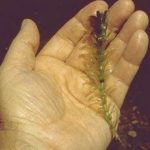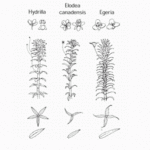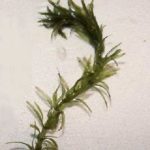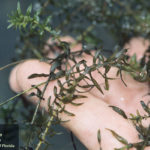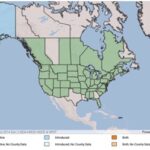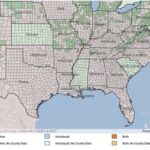Elodea canadensis
Illustration courtesy of University of Florida/IFAS Center for Aquatic and Invasive Plants. Used with permission.
What is Elodea?
Physical Characteristics
Leaves:
- Fairly straight
- Gradually gets smaller as tip approaches
- Flexible
- Whorls of 3
Stem:
- Mostly upward
- 2 feet 7 inches- 4 feet 11 inches long
Roots:
- Rooted in wet mud
Elodea is often confused with Hydrilla and Egeria. Elodea has only 3 leaves in the whorl and no midrib teeth.
Where Does it Grow?
USDA, NRCS. The PLANTS Database (http://plants.usda.gov). National Plant Data Team, Greensboro, NC 27401-4901 USA.
Elodea can be found in wet mud along sluggish streams, seepage areas, and marshes.
Pros and Cons of Elodea
Elodea has no known direct food value to wildlife, but is used extensively by insects and invertebrates. Submerged portions of all aquatic plants provide habitats for many micro and macro invertebrates. These invertebrates in turn are used as food by fish and other wildlife species (e.g. amphibians, reptiles, ducks, etc.). After aquatic plants die, their decomposition by bacteria and fungi provides food (called “detritus”) for many aquatic invertebrates.
